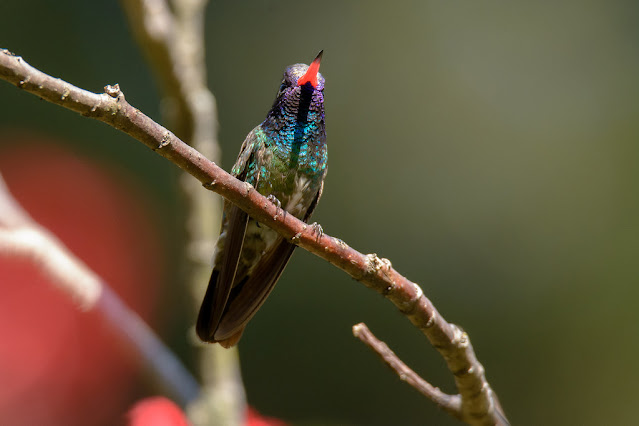Home Hummingbird White-eared Hummingbird: A Glimpse into Habitat and Behavior
White-eared Hummingbird: A Glimpse into Habitat and Behavior
Bird Of The World February 19, 2024 0
The White-eared Hummingbird is a captivating species that enchants birdwatchers with its vibrant plumage and agile flight. In this article, we will uncover the distinctive features, habitat preferences, and fascinating behaviors of the White-eared Hummingbird, offering a glimpse into the world of these aerial wonders.
 |
Understanding the White-eared Hummingbird:
Scientifically known as Basilinna leucotis, the White-eared Hummingbird is celebrated for its striking appearance, featuring iridescent green plumage and, as the name suggests, a distinctive white patch behind its eye.
Key Characteristics:
The allure of the White-eared Hummingbird lies not only in its colors but also in its diminutive size and remarkable agility. With wings beating at an astonishing rate, these hummingbirds are masterful fliers, capable of hovering in mid-air and extracting nectar from flowers with their specialized bills.
Habitat and Geographic Range:
These enchanting birds are predominantly found in the mountainous regions of Mexico and Central America. Dense, montane forests with an abundance of flowering plants are the favored habitats of the White-eared Hummingbird. Understanding their geographic range and preferred ecosystems is essential for appreciating their role in local biodiversity.
Behavior and Feeding Habits:
The White-eared Hummingbird exhibits intriguing behavior, including acrobatic flight displays during courtship. Their primary source of nutrition is nectar from a variety of flowering plants, a process that contributes to pollination in their ecosystems. Delving into their feeding habits provides insights into their ecological significance beyond their aesthetic appeal.
Conservation Considerations:
Despite their adaptability, White-eared Hummingbirds face threats such as habitat loss and climate change. Conservation efforts should focus on preserving the montane forests they inhabit and raising awareness about the importance of these ecosystems. Collaborative initiatives involving local communities and conservation organizations play a vital role in securing the future of these remarkable hummingbirds.






Post a Comment